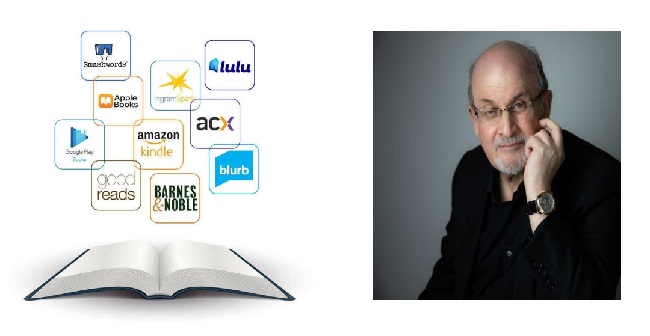For years, traditional publishing houses have dominated the publishing industry. However, with new competitors like Amazon KDP, Apple Books, Smashwords and Kobo Writing Life, coming into the market, they are at risk of going extinct.
Gloomy prospects
If you Google something along the lines of “is traditional publishing alive or dead?”, you will meet with alarming news. “The Bertram Group, one of two major U.K. book wholesalers, has gone bankrupt.”, “The Inevitable Death of Traditional Book Publishers.”, “Two Major Publishers go Bust as Recession Bites into Historical Book World.” “In Turkey, book publishers face agonizing choices to survive.” These are some of the headlines that indicate the growing crisis in the book publishing industry. New statistics highlight the gloomy prospects facing this industry. Under the headline “The Book Sales Boom Is Over”, American weekly trade news magazine Publishers Weekly pointed out that the sales of print books fell 8.9% in the first quarter of this year.
Digital transformation
New authors have always been relying on more affordable, easier to access self-publishing platforms to create, distribute, and promote their new book projects. And these platforms have rewarded many of them, giving them voice and great opportunities to succeed. Today popular names are joining these online platforms, and Salman Rushdie is one of them. He recently announced that he would bypass print and publish his next book on Substack. The author of controversial novel The Satanic Verses was inspired by Israeli writer Etgar Keret. He told the Guardian, “I’ve been looking at (Keret’s) Substack and it’s so witty and enjoyable, and he’s clearly having a wonderful time doing it, I thought, ‘maybe I could do that’.”
Mark Dawson is one of the self-publishing success stories in Amazon’s online store. He tried the traditional publishing route with his first book with too little success. He then switched to Amazon’s Kindle Direct Publishing, which enabled him to publish bestselling, life-changing books. He now makes about $450,000 a year Self-publishing on this platform.
Likely to be rejected
Unlike well-established authors, new writers are very likely to be rejected many times before they manage to land a book deal. With more publishers announcing layoffs, hiring freezes, pay cuts, and some going bust, the publishing houses are a little to blame for this. They usually have a long list of books awaiting to be published. Priority is usually given to most profitable works and to best selling authors as they only make money when writers make money. New authors may face the rejection of publishers, literary agents, and distributors, and their dreams of seeing their books published through traditional publishing houses may never come true. American author, Robert Kiyosak had a tough experience when he tried to publish Rich Dad, Poor Dad, in 1997. After many unsuccessful attempts to publish his book through traditional publishers, he decided to self-publish. His book was a great success, selling over 40,000,000 copies in over 50 languages, worldwide.
Lower royalty rates
If you secure a book deal from a traditional publisher, you will get an advance, which you won’t get if you decide to self-publish. But the average advance is decreasing anyway. On the other hand, the average retail royalties fall in the 10% to 15% range on Hardcover sales, and 5% to 7.5% on Trade Paperback sales. Compare that with self-publishing where an author can earn up to 70 percent of the book’s cover price. The Author is also free to set the prices and decide on the profit margins.
Loss of rights and control
By signing a contract with a traditional publisher, the authors are typically selling all or most of rights to their work. This means that the author cannot use, sell, or republish their own material. This also means that the author loses all control over the book they have written.
In contrast, one of the benefits of self-publishing is to have full control over their work. For instance, when the editors suggest changes to their books, the Self-publishing authors always have the final say and can turn down any suggestions they do not agree with. Science fiction author David Gaughan Said, “If you self-publish, you get to pick yourself instead of waiting (forever) to be picked. You get to choose an appropriate cover for your book, not one foisted on you by a publisher anxious to move onto the next batch of titles.” Printed books are managed by publishing houses. They usually control the prices and marketing, and the author has no control when the book is in the bookstores. With self publishing, the author is in full control and can at any time decide what the price of the book should be.
Lack of promotions
One of the most effective ways to attract new readers is to offer free samples of a new book.
With traditional marketing, specials, discounts, or other promotions are not common.
Self-publishing is much more engaging than traditional publishing. It offers a better control, a greater sense of perspective, and more engaging experiences than traditional print methods. The author can share a chapter with the audience and give readers special offers. This would attract new readers, raise interest in the book and boost the sales. A Self-publishing author can also give the readers a PDF of an older self-published book for free, or perhaps at a discounted rate if they purchase the new book. These promotions are an important way for writers to boost sales and gain new readers and fans.
Post publication
One of the greatest benefits of self-publishing is Print on Demand (POD). It means that book’s digital copies are held by the printer and they are not printed until a book order is received. In other words the book is printed on demand, saving resources and warehouse space. With traditional publishing, the books are printed up front, and the more copies you print, the cheaper the unit price becomes. It can lead to excess stock of printed books and piles of books occupying warehouses and sitting on the shelves of bookshops.
Killing off print
With more publishing houses announcing layoffs or declaring bankruptcy, and more authors shifting to online self-publishing platforms, the death of traditional book publishing seems to be imminent. It seems overwhelmed by the blows from different directions. Digital and the internet’s big players – book publishing sites such as Amazon KDP, are all hitting it hard and killing it. However, the final blow to the hardcopy book and traditional publishing will not be technology but rather the authors themselves who will continue to flee from the traditional route to more popular and more profitable online platforms. Fiction writers big names are among these, just like Salman Rushdie who said, “I am having another go, I guess, at killing it.”




